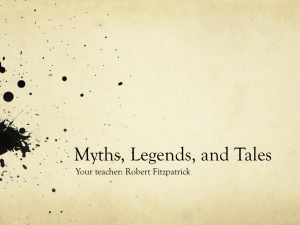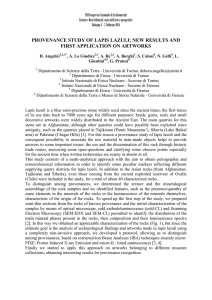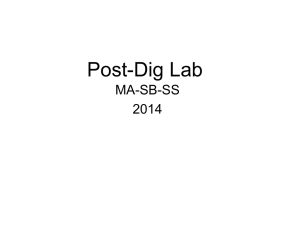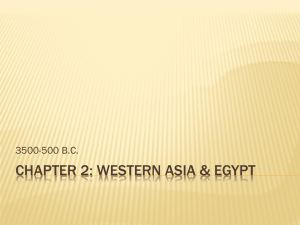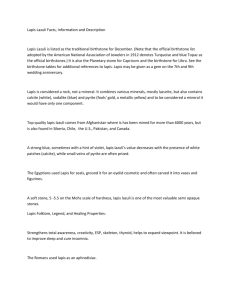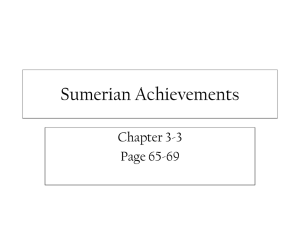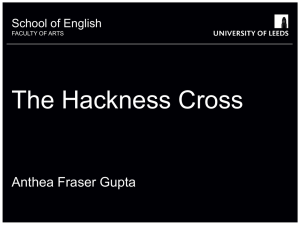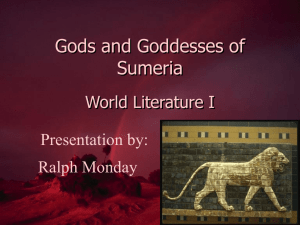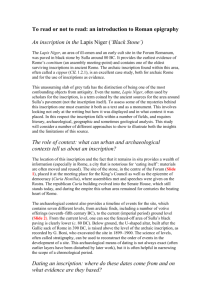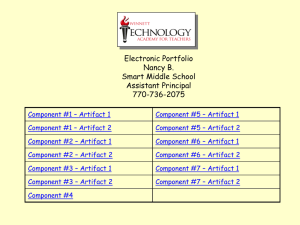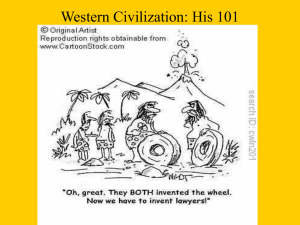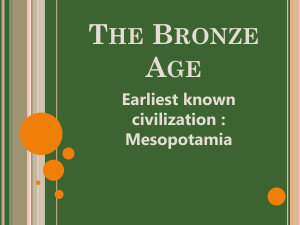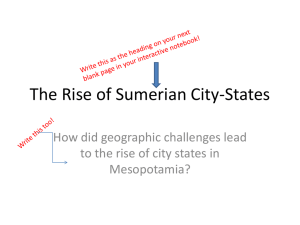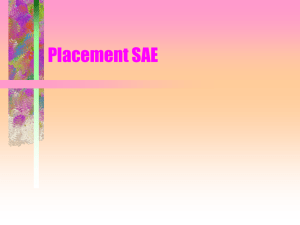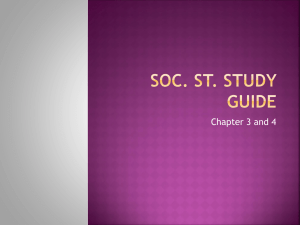game of Jeopardy
advertisement
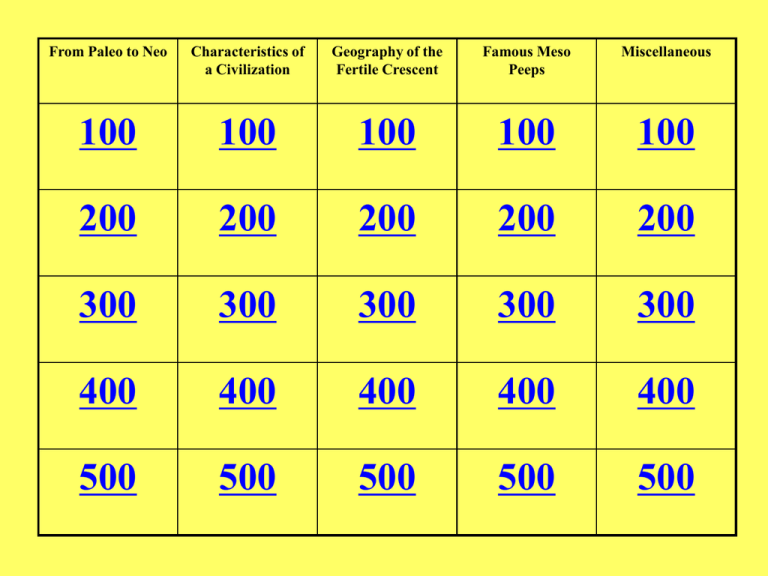
From Paleo to Neo Characteristics of a Civilization Geography of the Fertile Crescent Famous Meso Peeps Miscellaneous 100 100 100 100 100 200 200 200 200 200 300 300 300 300 300 400 400 400 400 400 500 500 500 500 500 “Lithic” is Greek for ________. “Neo” is Greek for ________. “Paleo” is Greek for ________. True or False: During the Neolithic Age, people began farming and built permanent town/villages. The name of people who travel from place to place in search of food. stable food supply, social structure, government, religion, technology, the arts, writing ONE characteristic this artifact relates to. Cylander of Pu-abi This cylinder seal was discovered in the Royal Cemetery at Ur. It is engraved with a banquet scene. The cuneiform inscription on this seal reads 'Pu-abi nin'. It is possible that Pu-abi may have been a high priestess in the service of the moon god, Nanna. The seal is made from lapis lazuli, which would have come from Afghanistan. This not only shows the extensive trade routes that existed at this time, but also how important Pu-abi was, owning an object made of such an exotic material. stable food supply, social structure, government, religion, technology, the arts, writing ONE characteristic this artifact relates to. Assyrian Lamassu These guardian figures flanked one of the entrances into the throne room of King Ashurnasirpal II. Stone mythological guardians were often placed at gateways to ancient Mesopotamian palaces, as protection from demonic forces. Between the legs is inscribed the 'Standard Inscription' of Ashurnasirpal which is repeated over many of his reliefs. It records the king's titles, ancestry and achievements. stable food supply, social structure, government, religion, technology, the arts, writing TWO characteristics this artifact relates to. Ishtar Gate This gate was commissioned by King Nebuchadnezzar II and was dedicated to the Babylonian goddess, Ishtar, and played a large part in processional festivals. stable food supply, social structure, government, religion, technology, the arts, writing TWO characteristics this artifact relates to. Sumerian Headdress This headdress has gold leaves separated by lapis lazuli and carnelian beads. It was found on the forehead of one of a female attendant in a royal Sumerian tomb. The other attendants wore necklaces of gold and lapis lazuli, gold hair ribbons, and silver hair rings. Gold, silver, lapis, and carnelian were not natural to Mesopotamia. This is indicative of the wealth of Sumeria and that a sophisticated system of trade extended far beyond the river valley. stable food supply, social structure, government, religion, technology, the arts, writing. THREE characteristics this artifact relates to. Sculpture of a Governor The inscription on this sculpture says it is the governor, Gudea, of Lagash. It also mentions his wife and the dedication is to a goddess. His posture and clothing say a lot about what he was like, or at least how he wished to be remembered. The hat is worn by the rich, and he looks like a governor, calm, in charge, powerful, but still in mind of the goddess to whom he owes his good fortune. The cuneiform inscription on the back was made with a small wedge-shaped tool. The body of water shaped like a slug. The Nile River runs into this sea. This river runs into the Dead Sea. The mountain range north of the Persian Gulf. Mesopotamia is the land between these two rivers. This Akkadian king conquered all of Mesopotamia, including Sumer. This king created a code of laws and the punishments for those who broke them. An ancient Sumerian story of a king who had to accept his mortality. This Assyrian leader was known for his brutality but also his contribution to arts and education. In fact, he created the first library. Name of the band that sang “We’re the Mesopotamians.” This Sumerian invention helped maintain stable food supplies. The most amazing feature of Neo-Babylonia was this gift from King Nebuchadnezzar to his wife. Translated, this Greek word means “land between two rivers.” This temple tower is where Sumerians expressed their religious beliefs. The correct order of these events: Agriculture City-States Empires Cave Art

